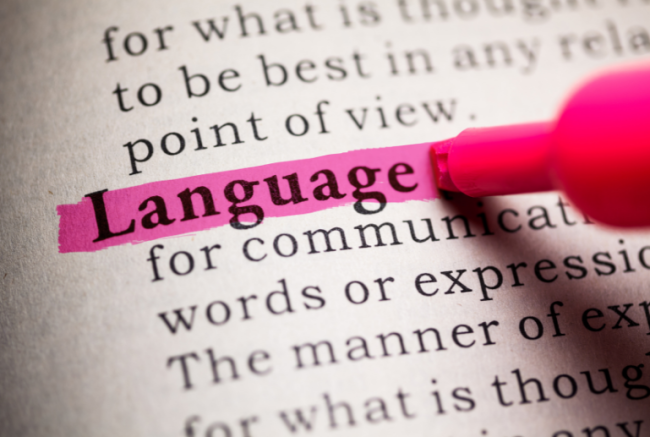You have /5 articles left.
Sign up for a free account or log in.

Devonyu/Getty Images
There is a telling Calvin and Hobbes comic in which Calvin expresses a newfound realization about writing: “With a little practice, writing can be an intimidating and impenetrable fog!” As evidence, Calvin shows his book report to Hobbes, who reads aloud the title: “The Dynamics of Interbeing and Monological Imperatives in Dick and Jane: A Study in Psychic Transrelational Gender Modes.” Calvin then declares, smiling dreamily, “Academia, here I come!”
As linguists and writing scholars, we have to agree with Calvin: academic writing is often laughably inaccessible. Although questions about style over substance have become more prominent with the increased awareness and use of AI text-generation tools, concerns about the “impenetrable fog” of academic prose are nothing new, a point reinforced by the trend of “prank articles” being accepted in high-profile journals. Academics themselves write about this: Helen Sword decries “mutant verbs” and “zombie nouns” in academic writing; Steven Pinker says that academics “stink” at writing.
But the issue of inaccessible writing is a serious one, with a real impact on people’s lives. Studies have found that the use of legalese in criminal justice systems often prevents defendants from understanding their rights and responsibilities. Attorneys often struggle to understand the writing in their own legal contracts. A study of laypeople’s responses to psychology research found that those who read summaries written in accessible, everyday language trust the research more and are more confident in using it to inform their decision-making.
Medicine is another field in which accessible language plays a role. Hundreds of thousands of Americans have unnecessary complications with medication each year because they have trouble comprehending the language on the prescription label. Some health literacy experts have even suggested that use of more accessible language could have lowered the number of deaths from COVID-19—especially in the early months when guidance was changing as new scientific findings emerged.
All this provides further support for the plain language movement, a global initiative taking hold in a number of professional fields but not yet changing how we write in academia, nor how we mentor others to write. Today, Oct. 13, is International Plain Language Day, and we would like to celebrate by calling in our fellow academics to this work—particularly those committed to diversity, equity and inclusion.
What Is Plain Language?
According to the International Plain Language Federation, the goal of plain language is to communicate in a way that is “so clear that the intended audience can easily find what they need, understand what they find, and use that information.” Guidelines for plain language in written documents often focus heavily on eliminating jargon, but experts point out that organization and sentence structure play a role as well. Plain language helps to ease the reading process for individuals, as well as simplify the process of translating documents into other languages.
The plain language movement in the U.S. dates back to the 1970s, although civil servants raised concerns before then—one notable example being John O’Hayre with the U.S. Bureau of Land Management, who wrote a 1966 book gloriously titled Gobbledygook Has Gotta Go. But it wasn’t until a decade later that governmental agencies began making policy changes to promote accessible language. President Nixon was the first to publicly declare that federal regulations should be written in “layman’s terms.” President Carter went a step further, issuing a mandate that “regulations shall be as simple and clear as possible”—an executive order that was revoked by President Reagan. The first federal legislation on plain language was not until 2010, with the Plain Writing Act, which mandated “clear government communication that the public can understand and use” across all agencies.
Plain language has been a focus for other countries as well. In fall 2022, New Zealand passed its own law, although its Parliament had created plain language guidelines more than a decade prior. Although they have not (yet) approved federal legislation, Australia, Canada and the United Kingdom have all issued directives and/or style guides encouraging accessible language use in governmental communication. Plain language has also been a focus in Commonwealth countries such as India, Nigeria and South Africa and in countries where languages other than English are more dominant, such as Brazil, Finland and Mexico. In 2015, the European Commission created a booklet entitled “How to Write Clearly,” available in 24 different languages, as part of an ongoing initiative entitled “Clear Writing for Europe.”
Although civil servants and legal scholars have been the most prominent plain language proponents, there are some indications that the movement is taking hold in parts of the academy. There have been multiple articles on the topic in Inside Higher Ed, The Chronicle of Higher Education and The Atlantic, as well as a growing number of empirical studies (e.g., from the Journal of Marketing) on the impact of plain language versus traditional academicspeak on how research is received by the public. Many scholarly journals now encourage or require “plain language summaries” from authors; there are organizations that will create those summaries for a fee—although research suggests that ChatGPT might do the job equally well. Many organizations have created guides that help academics use plain language in grant writing and when writing for public audiences. Plain language is even a growing academic field in itself, the subject of international conferences.
But there are many corners of the academy where talk of plain language is surprisingly absent. One of those is our own field of writing studies. Why aren’t more faculty who specialize in researching and teaching writing engaging with this movement? It is not that we are avoiding issues of linguistic access and inclusion. In fact, language rights and linguistic justice are frequent topics of conversation within the Conference on College Composition and Communication, the largest professional organization for college writing instructors in the United States. There has been some discussion of accessible language within subfields such as technical and professional writing. But those are the exceptions rather than the norm.
We suspect that part of the issue is the term itself. The phrase might seem to invoke a back-to-basics narrative that goes against where most of the field has been headed. Moreover, much of the discussion about plain language clearly has a prescriptivist tone that does not land well with instructors who strongly value the notion of individual voice in writing—even though that notion is itself problematic. Perhaps the biggest barrier, though, is lack of training: writing in plain language is a skill set that many writing studies scholars have not had an opportunity or incentive to develop.
However, as professionals who tend to be outspoken in our commitment to DEI, writing instructors and scholars would do well to learn more about plain language and to consider how to join—perhaps even to lead within—this movement. Ironically, though, conversations about DEI often use language that is anything but accessible. More than once, students have asked us, somewhat sheepishly, what terms like cultural hegemony or white language supremacy mean; many of our students from marginalized backgrounds feel alienated by the writing they read in the very DEI-centered courses they thought would feel most welcoming. There may be a role for specialized terminology and dense grammar in scholarly conversations among experts. But in many cases, including with our students, we have the opportunity to make linguistic choices that invite others in rather than blocking them out.
We are not suggesting that everything we write as academics needs to be in plain language. Nor is plain language the only cause we might take up in the name of linguistic inclusion and justice. But we do believe it could be of great use in higher education—including in making our work, and our students’ future work, more accessible to the public, where it may have a much greater impact. DEI and antiracism experts often cite Audre Lorde’s brilliant “The Master’s Tools Will Never Dismantle the Master’s House” when they are criticizing particular approaches or strategies. Perhaps dense, jargon-filled prose is one of those “master’s tools.” If so, then plain language is a welcome addition to our rhetorical toolbox.




